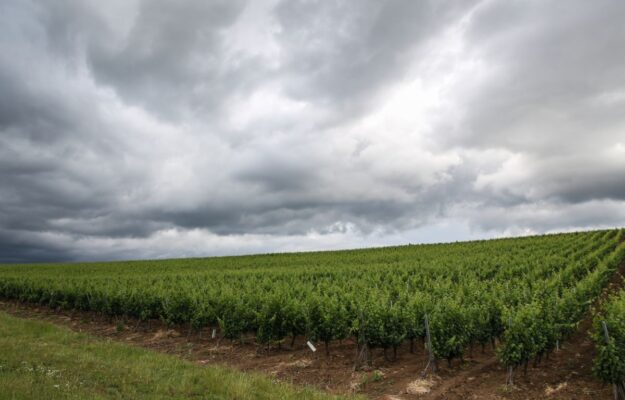There is no doubt that one of the most difficult challenges in the world of wine is that of climate change. Together with wine consumption that heads elsewhere, mainly by new generations, climate change is maybe the most recurring theme, but also the most difficult to understand in order to find an effective solution. Indeed, climate change represents an unprecedented challenge to European winemakers, and especially to more than 1,000 denomination of protected origin, in Italy represented by the production of Pdo and Docg wines (35% of the total of the EU, France is at 31%). A study research published on “Nature Communications” and coordinated by Ca’ Foscari University of Venice and Eurac Research of Bolzano, found out the vulnerability of these European wine productions, taking into consideration not only climatic scenarios, but also regulations and socio-economic resources, which are present in every wine region.
As a note by Ca’ Foscari University of Venice explains, the denominations represent a legal system of protection and recognition of specific products, which are intrinsically linked to specific geographical areas, traditions, and codified production methods, and therefore potentially difficult to adapt to new climatic conditions. Regarding the exposure to climate change, the denominations which will change in a more relevant way are located in Romania, Croatia, Bulgaria, Italy and Hungary. Areas with a strong oceanic influence, such as Portugal and Canaries, or located at higher altitudes, such as Belgium and the Netherlands, will be exposed to minor climate changes. If historical climate conditions linked to traditional varieties in the various denominations are taken into consideration, southern Europe regions would register a higher sensibility to the variations, due to their strict rules about cultivable varieties, or because they are closer to the maximum temperature limit, for which the existing vineyards are suitable.
Furthermore, researchers have calculated the ability to adapt of every denomination, which is the possibility to implement actions and resources to cope with new climate conditions, taking into consideration 15 indicators. Among the analyzed socio-ecological parameters, there are the population structure, the financial solidity, the competences in human resources, and the natural characteristics of the territory allowing greater adaptability, which outline different groups of wine regions, with a different level of vulnerability. 5% of European wine regions risk the most significant impacts in the next decades, not only for climate conditions, but also for the lack of resources to adapt: among these, the authors mention Trebbiano d’Abruzzo and Lambrusco Mantovano in Italy, and Sierra de Salamanca in Spain. For other three groups of denominations, the vulnerability level is high, but not as much as the worst group. That is 25% of European wine regions. These include, for example, Côtes de Provence (France), Conegliano Valdobbiadene Prosecco (Italy), Alentejo (Portugal) e Rioja (Spain), and some denominations in central Italy (for example Colli Maceratesi and Colline Teramane Montepulciano d’Abruzzo). 70% of regions belong to medium to low risk groups: among these, Côtes d’Auvergne and Alsace in France, Rheinhessen in Germany, and South Tyrol in Italy. What makes the difference for many of them is precisely adaptive capacity: they will have the resources to modify some parameters potentially, for example increasing their altitude or investing to improve their technologies, and resist to environmental changes.
“In over thousands of European geographic indications, there is a huge difference, not only taking into consideration the environmental and climatic conditions, and productions, but also cultural values and traditions. All this contributes to define the terroir of a region – explains Sebastian Candiago, who worked on the research in Science and Management of Climate Conditions, during his PhD at Ca’ Foscari University of Venice, and today he is a researcher at the University of Bayreuth, in Germany – climate change outlines a relevant problem for winemakers, since the vine is a never-ending crop, and depends on the specific conditions of the place where it is cultivated. Furthermore, modify the laws contained in wine production guidelines is not always easy. Flexibility and foresight are needed. With this research, we tried to understand which wine regions will cope with major difficulties, so that they can continue to supply an economic, environmental, cultural and identity value”. In some cases, the solution can be an extension in quote, the implementation of different techniques of pruning in the vineyard, the introduction of the irrigation; in other cases, the note concludes, “a deep change in the rules is needed. The wine production guidelines are made to regulate and to remain, but are not eternal. This is proved by Bordeaux case, where the possibility to implement varieties such as Touriga Nacional, typical of Portugal and thus adapted to warmer climates, was recently introduced for experimentation that could make the wine region more resilient to future changes”.
Copyright © 2000/2026
Contatti: info@winenews.it
Seguici anche su Twitter: @WineNewsIt
Seguici anche su Facebook: @winenewsit
Questo articolo è tratto dall'archivio di WineNews - Tutti i diritti riservati - Copyright © 2000/2026









































































































































































































